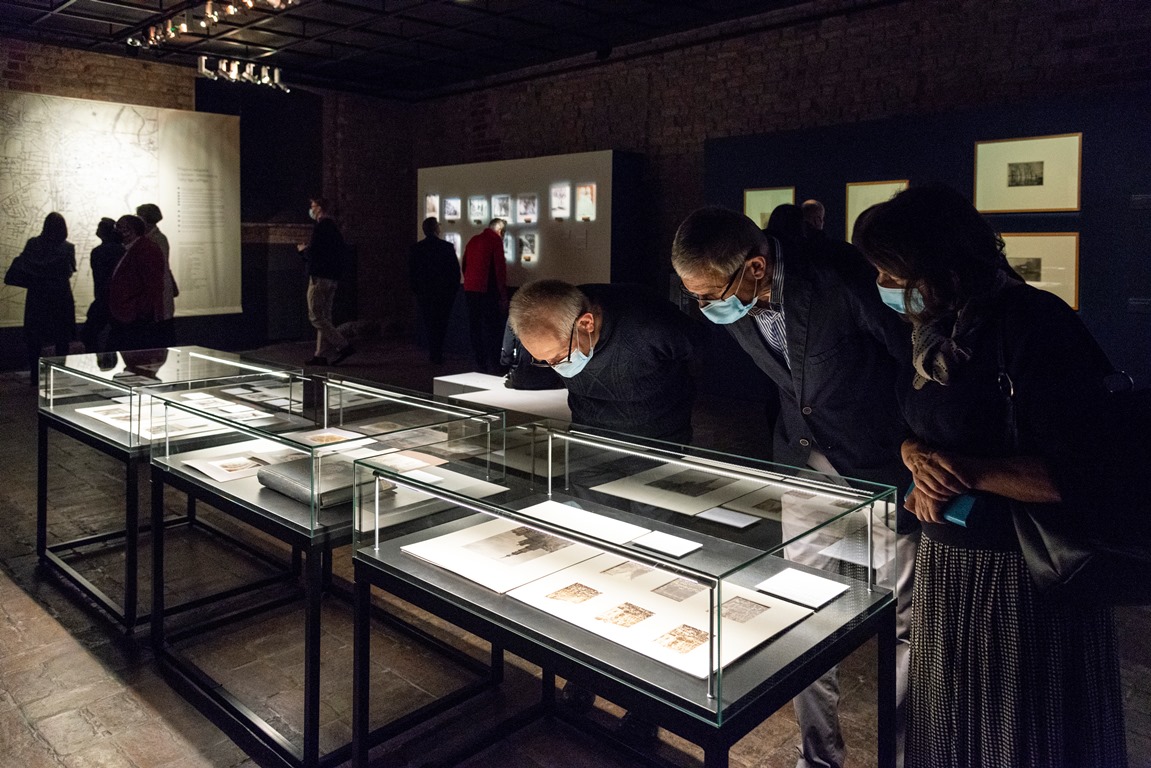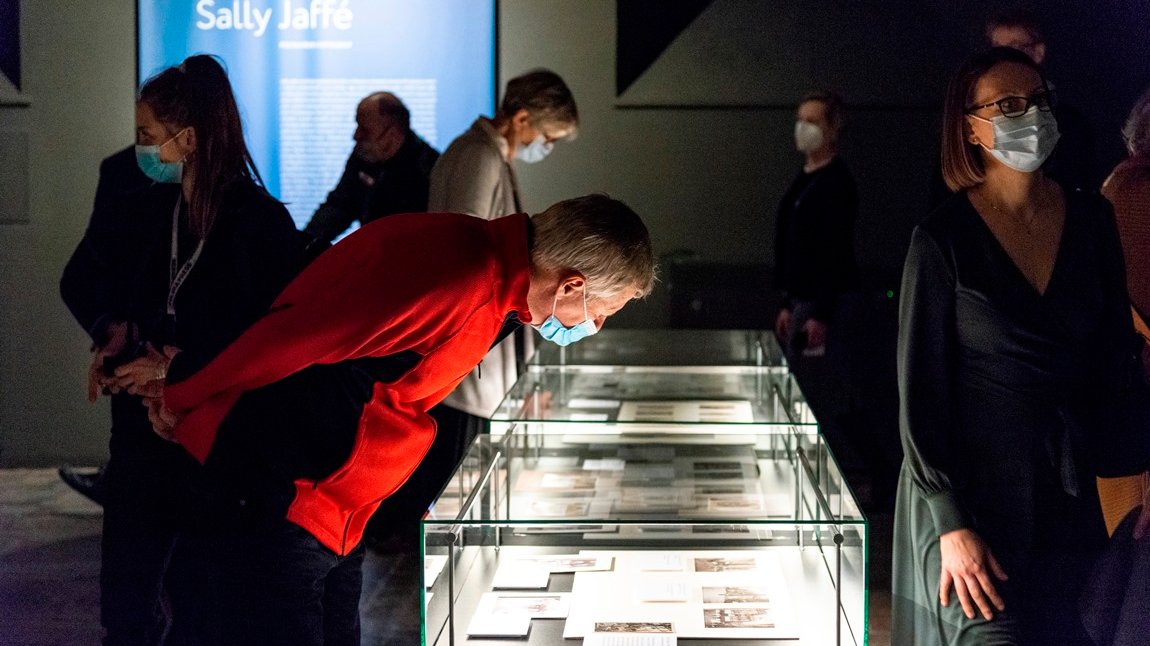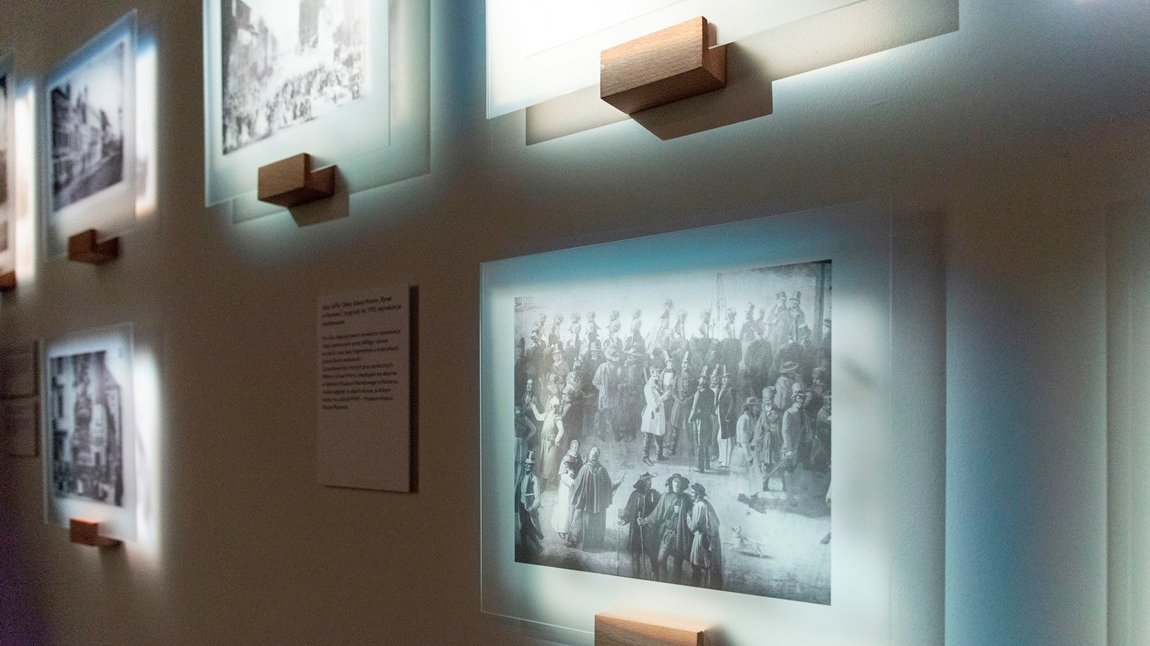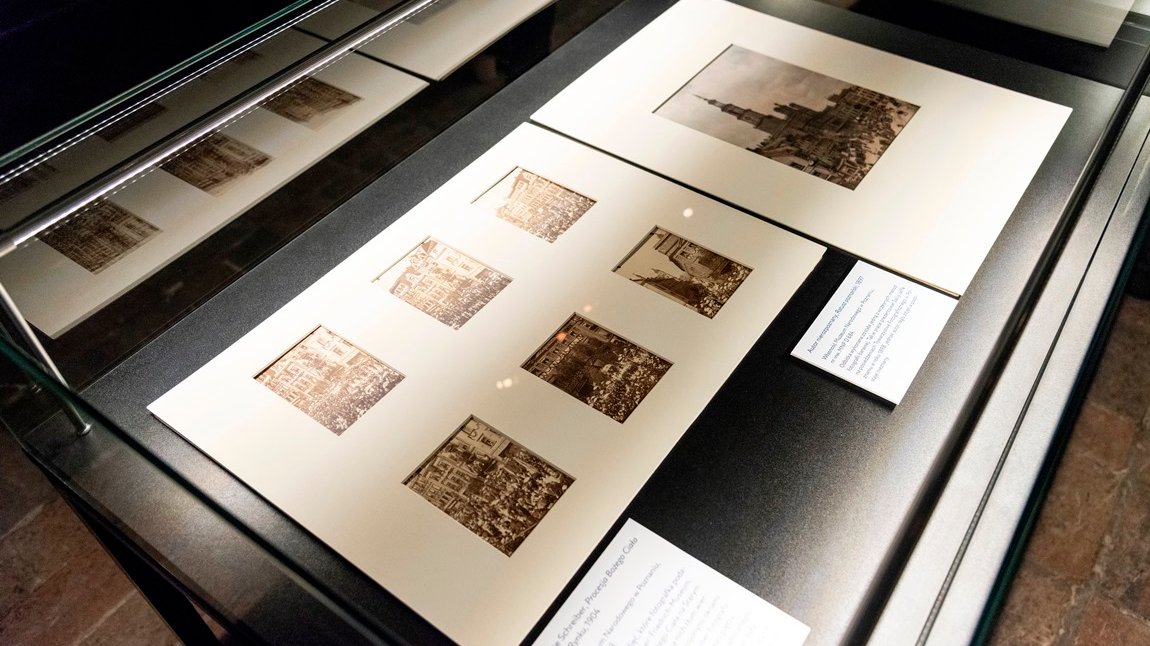"The Poznań Photographer Sally Jaffé" is not a monumental exhibition. Placed in the basement of the Museum of Applied Arts, it is compact and modestly set, and I don't mean this as a dig. The dark space it occupies is spot lit to highlight the photos, the majority of which are originals, although some, shown on illuminated panels, are reproductions. The whole setup seems to whisper subtly and encouragingly to the visitor: "Come here, come closer, take a look." As the visitors slowly adjusts to the darkness that envelops the space, they are drawn to the light and approach the photos hung on walls and displayed in showcases. They are inevitably impressed, which goes to prove my opening assertion that people love vintage photos. For many of them, what the photos depict is completely irrelevant. All that counts is the sense of communing with something authentic and real that is long gone. The photos are not unlike keyholes through which one observes objects that are no longer within one's reach: they are snippets of the past set in a frame. The question though is whether the photos by Sally Jaffé, a photographer who was born in Poznań in 1845 and died in Berlin at the age of 75, on display in the Museum of Applied Arts, should be viewed for their visual appeal only?
This would be very unfair, as hard as it is to escape the enchantment. Such admiration is not only natural, but also well deserved. It is not easy, if at all possible, to ignore the charm of idyllic photos portraying the districts of Sołacz, Dębina, the city's back streets, and its residents going about their daily lives, such as those portrayed by Sally in a Poznań shelter. However, to fully understand this exhibition, one should start back at the time it was established.
All began with the photos held in the museum's collection. Some are easily attributable to Jaffé while others are only suspected of being his work. All are important parts of the collection from an iconographic viewpoint. They show the city as it was in the late nineteenth and early twentieth centuries. They portray building exteriors and interiors, city streets, and its inhabitants. This makes them an extraordinary chronicle of life in Poznań. Their value is beyond dispute. The material they provide is precious not only for historians researching the city's history but in fact for anyone with interest in its past.
Pick a photo and if their author's name appears somewhere, you can immediately ask who the author was, how he ended up involved with photography, and what were the activities that he pursued? Imagine that such questions cannot readily be answered as only rudimentary information is available about the photographer. One can also inquire more broadly about Poznań's photographic community, how it worked, and what photography meant for the people who lived at the time. Note that in the early 20th century, photography was still fairly new, and perhaps a bit mysterious albeit appealing.
With so many puzzling questions to answer, the partially catalogued collection of Jaffé's photos and the gaps in knowledge about their author pose an interesting research challenge. It is therefore difficult not to see the display through the lens of the book by Ewa Hornowska, the exhibition's curator, which was published on the occasion. Perhaps to refer to the book as having appeared "on the occasion" is not fully accurate as this voluminous publication deserves credit for being a consequential entity in and of itself. Rather than a catalogue in the strict sense of the word, it is actually so much more: a result of years of research, years of searching and gathering information, reaching previously unknown sources, sifting through facts and connecting the dots to produce as complete a picture of Sally's life and work as possible. While one can feast one's eyes on the photos until the display closes and gets disassembled, the book itself is here to stay as a lasting record of the author's doings, becoming more than a mere overview of the photos shown at the exhibition.
The book is comprised of several parts. Not unexpectedly, one of its chapters is devoted to the photographer's family life. A whole separate section discusses his engagements in the town's photographer community, the place of photography in Poznań and the interest it generated. Jaffé is revealed as a committed activist and an excellent practitioner, an artist, and an experimenter, who never ceased to explore the possibilities of this constantly developing medium. Part Two of the book is a catalogue, subdivided into two sections. One of them is devoted to photographs from the holdings of the National Museum of Poznań and the University Library that have been preserved as paper prints, and photos known only from their reproductions. A very useful glossary of photographic terms completes the volume.
Someone might object claiming that the exhibition has to defend itself, instead of being propped up by research findings. I have no doubts that the exhibition will do just that. After all, its marvellous photos are worth viewing both as remarkable illustrations and as material that helps one to compare the past with the present. And yet, I am just as convinced that exhibitions may contribute to learning more about a given topic. This particular exhibition certainly does, while the background research deserves the highest praise.
Justyna Żarczyńska
translation: Krzysztof Kotkowski
Exhibition: The Poznań Photographer Sally Jaffé
Museum of Applied Arts
Open until 30 January 2022
© Wydawnictwo Miejskie Posnania 2021






